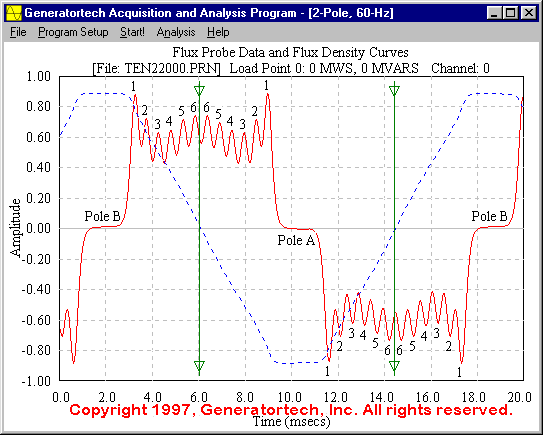Overview of Shorted Turn Theory & Flux Probe Testing
A flux probe test determines the existence of rotor winding shorted turns by measuring the magnetic flux produced by each coil in a generator's rotor.
The amount of magnetic flux produced by a coil is the product of the current and number of active turns in the coil (amp-turns or magnetomotive force [MMF]). If a shorted turn is present, the number of active turns in a coil is reduced and the resulting decrease in magnetic flux produced by the coil can be determined by analysis of the flux probe waveform.
In order to get the best sensitivity for detecting shorted turns in all rotor coils, a series of loadpoints is recorded as the load on the unit is varied.
The flux density curve zero-crossing (FDZC) position will vary based on the loadpoint. The value of the FDZC will vary from 1 to n (where n is the number of coils in the generator). A waveform's FDZC value will directly correspond to the coil with the maximum sensitivity for detecting shorted turns.
The coils that are further away from the FDZC position will have decreased sensitivity for detecting shorted turns due to a combination of magnetic flux saturation of the rotor iron and modulation effects.
See the movement of the FDZC as the load moves from no-load to full-load.

- GENERATORTECH, INC.
- Support@Generatortech.com
- Phone: 518.399.4646
- Fax: 518.399.7562
- 104 Newman Rd
- Schenectady, NY USA 12302-9517
© 2017 Generatortech, Inc.